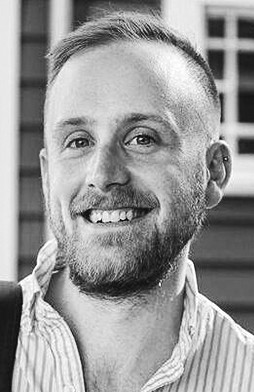Grieving our losses – and envisioning the next chapter of Jewish life
It now seems like years ago that we were grieving not being in-person for our Passover seders, and dreaming up creative, safer alternatives to large gatherings of family and friends. Now, many of us have already started conversations about what the High Holy Days will look like in the fall.
What will be different? What will stay the same?
We approach these questions with anxiety, excitement and our continued commitment to shaping Jewish life so that it remains relevant, meaningful and livable.
For the thousands of years that the Jewish people have been around, we have always asked these questions and struggled to do the work of continuing to make Jewish life meaningful, grounded in tradition and relevant. While we Jews have disagreed about the best ways to make this happen (think: denominations), we have all been engaged in this project for millennia.
Parashat Naso offers us a surprising way into this process. In it, we read the instructions for the strange and unusual sotah ritual, which a husband does with his wife if she has either committed adultery or he suspects her of adultery. The ritual itself is rather disturbing to modern sensibilities. In the Mishnah, our earliest codified rabbinic law, the rabbis dedicate a whole tractate to this ritual – and render it even more disturbing than the original Torah text.
I will spare you the gory details (and they are gory) and instead will jump to the end of Mishnah Sotah.
After eight and a half chapters of instructions on the sotah ritual and a few other topics, the Mishnah begins to list things that came to an end around the time of the rabbis. The list includes when the Sanhedrin ceased to function, songs ceased from places of feasting; when Rabbi Meir died, composers of fables ceased; when murder increased, the ritual of breaking a calf’s neck (described in Deuteronomy) ceased; and many more.
Amid the long list of tragic changes and their impact on Jewish life, the Mishnah also mentions that the sotah ritual also ceased when adulterers increased in the world.
While all of the sources of the changes are tragic – i.e., increased murder and adultery, the deaths of great rabbis and scholars – the outcomes are not equally tragic.
While I am not glad that adultery increased, I am glad that we no longer conduct the sotah ritual. While I am not glad that the Temple was destroyed, I am glad that we no longer have animal sacrifices.
These moments of tragedy and rupture in Jewish life bring about change. How Judaism changes and the direction that it needs to go is ultimately in our hands as the practitioners of Jewish life. Rabbi Mordecai Kaplan, the father of a Reconstructionist approach to Judaism, wrote, “A people can live as long as it can reconstruct its life to meet changing conditions.”
We have been reconstructing Jewish life for millennia. Each attempt is always an experiment. Some of the experiments have lasted until this day, like making Torah study a central part of Jewish life, and others have fallen by the wayside, like putting magic bowls under our homes to keep demons away!
Most of our Jewish experiments over the millennia have been lost, and we will never know about them. The celebration of the Bat Mitzvah, a more recent experiment that was pioneered by Kaplan and his daughter Judith, seems to be one that is sticking around.
So why did the rabbis of the Mishnah spend close to nine chapters going into detail about the sotah ritual only to tell us that there was too much adultery for it to be practiced?
I think one reason is that the Mishnah is a container for their mourning. While much of Mishnah speaks to practices that are still in place today, like when to say the Shema and what constitutes a sukkah, much of it is about practices that ceased when the Temple was destroyed. To move on to the newly developing forms of Jewish life championed by the rabbis, they needed to tell the story of what had been. They recorded the lost practices in the annals of Jewish memory, and not only that, but they called these memories “Torah.”
As my teacher Rabbi Benay Lappe says, one of the most radical moves the rabbis made was to articulate a new vision of Jewish life through the Mishnah and Talmud and call it Oral Torah, or, as she playfully likes to call it, Torah 2.0. In doing so, the ancient rabbis offer us a model for how we can continue to reshape Jewish life to this day.
Oral Torah contains both a vision for the future and the story of the past. Right now, we are in need of Torah 3.0. Again, we need to tell the story of all the Jewish practices that have come to an end, without knowing when they will return.
Like the ancient rabbis, we are in a moment of rapid change in Jewish life. There are some things, like the sotah ritual, that we may be happy to leave behind, and there are other things, like communal songs in places of feasting, that have been harder to let go of.
As we explore both the gifts and limitations of digital Jewish life, and the risks and benefits of “reopening,” may we be guided by the wisdom of Mishnah Sotah. Let us name the changes, each and every one of them, so that we can grieve the losses and let our imaginations run free as we continue to envision the next chapter in our collective Torah – the story of Jewish life.
ALEX WEISSMAN is the incoming rabbi at Congregation Agudas Achim, in Attleboro, and is the rabbinic organizer at T’ruah: The Rabbinic Call for Human Rights.








